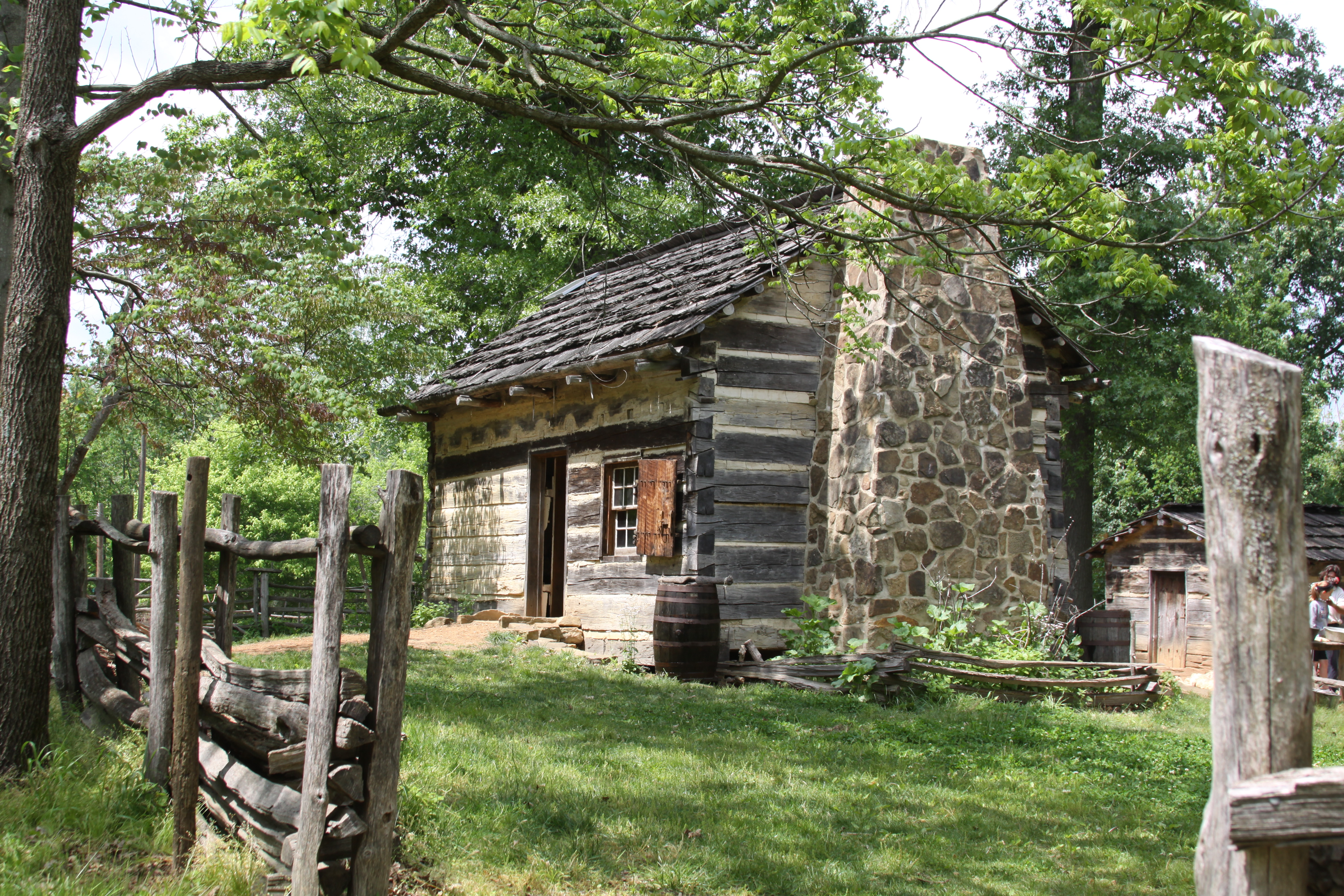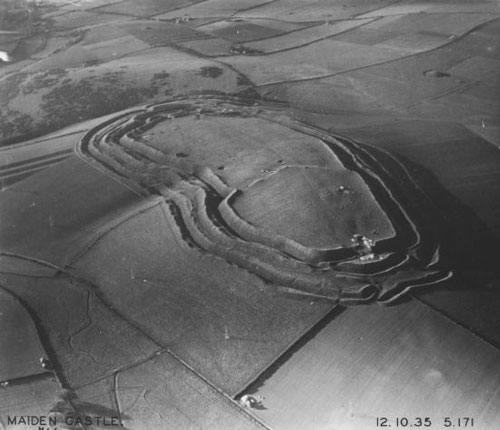|
Fort Wyman
Fort Wyman was an earthen fort built by the Union Army near Rolla, Missouri during the American Civil War. Rolla had been captured by General Franz Sigel on June 12, 1861 and from that date throughout the Civil War it remained in Union hands for President Abraham Lincoln had issued an order: "By all means hold Rolla." Rolla was the westernmost supply depot in Southern Missouri being at the Western Terminus of the Pacific Railroad at that date. Following the Union defeat at the Battle of Wilson's Creek on August 10, 1861, the Union Army fell back to Rolla and began building an earthen fort on the top of a hill alongside the present Highway 63 about a mile from the Courthouse. The rectangular fort had a dry moat around the perimeter with 32-pound field pieces located on each corner of the fort to cover any attack on Rolla from the south. It was named Fort Wyman after Colonel John B. Wyman. Colonel Wyman sent out soldiers from Rolla in all directions who captured what they cal ... [...More Info...] [...Related Items...] OR: [Wikipedia] [Google] [Baidu] |
Fort Wyman In Rolla, Missouri
A fortification is a military construction or building designed for the defense of territories in warfare, and is also used to establish rule in a region during peacetime. The term is derived from Latin ''fortis'' ("strong") and ''facere'' ("to make"). From very early history to modern times, defensive walls have often been necessary for cities to survive in an ever-changing world of invasion and conquest. Some settlements in the Indus Valley civilization were the first small cities to be fortified. In ancient Greece, large stone walls had been built in Mycenaean Greece, such as the ancient site of Mycenae (famous for the huge stone blocks of its 'cyclopean' walls). A Greek '' phrourion'' was a fortified collection of buildings used as a military garrison, and is the equivalent of the Roman castellum or English fortress. These constructions mainly served the purpose of a watch tower, to guard certain roads, passes, and borders. Though smaller than a real fortress, they acte ... [...More Info...] [...Related Items...] OR: [Wikipedia] [Google] [Baidu] |
Union Army
During the American Civil War, the Union Army, also known as the Federal Army and the Northern Army, referring to the United States Army, was the land force that fought to preserve the Union of the collective states. It proved essential to the preservation of the United States as a working, viable republic. The Union Army was made up of the permanent regular army of the United States, but further fortified, augmented, and strengthened by the many temporary units of dedicated volunteers, as well as including those who were drafted in to service as conscripts. To this end, the Union Army fought and ultimately triumphed over the efforts of the Confederate States Army in the American Civil War. Over the course of the war, 2,128,948 men enlisted in the Union Army, including 178,895 colored troops; 25% of the white men who served were immigrants, and further 25% were first generation Americans.McPherson, pp.36–37. Of these soldiers, 596,670 were killed, wounded or went missi ... [...More Info...] [...Related Items...] OR: [Wikipedia] [Google] [Baidu] |
Rolla, Missouri
Rolla () is a city in, and the county seat of, Phelps County, Missouri, United States. The population in the 2020 United States Census was 19,943. Rolla is located approximately midway between St. Louis and Springfield along I-44. The Rolla, Mo Micropolitan Statistical area consists of Phelps County, Missouri. It is the home of the Missouri University of Science and Technology, well known, both nationally and internationally, for its many engineering departments and computer science department. The headquarters of the Mark Twain National Forest is located in Rolla. The city is also within the Ozark Highlands American Viticultural Area, with vineyards established first by Italian immigrants to the area. History The first European-American settlers in Phelps County arrived in the early 19th century, working as farmers and iron workers along the local rivers, such as the Meramec, the Gasconade, and the Little Piney. In 1842, John Webber built the first house in what b ... [...More Info...] [...Related Items...] OR: [Wikipedia] [Google] [Baidu] |
American Civil War
The American Civil War (April 12, 1861 – May 26, 1865; also known by other names) was a civil war in the United States. It was fought between the Union ("the North") and the Confederacy ("the South"), the latter formed by states that had seceded. The central cause of the war was the dispute over whether slavery would be permitted to expand into the western territories, leading to more slave states, or be prevented from doing so, which was widely believed would place slavery on a course of ultimate extinction. Decades of political controversy over slavery were brought to a head by the victory in the 1860 U.S. presidential election of Abraham Lincoln, who opposed slavery's expansion into the west. An initial seven southern slave states responded to Lincoln's victory by seceding from the United States and, in 1861, forming the Confederacy. The Confederacy seized U.S. forts and other federal assets within their borders. Led by Confederate President Jefferson ... [...More Info...] [...Related Items...] OR: [Wikipedia] [Google] [Baidu] |
Franz Sigel
Franz Sigel (November 18, 1824 – August 21, 1902) was a German American military officer, revolutionary and immigrant to the United States who was a teacher, newspaperman, politician, and served as a Union major general in the American Civil War. His ability to recruit German-speaking immigrants to the Union armies received the approval of President Abraham Lincoln, but he was strongly disliked by General-in-Chief Henry Halleck. Early life Sigel was born in Sinsheim, Baden (Germany), and attended the gymnasium in Bruchsal. He graduated from Karlsruhe Military Academy in 1843, and was commissioned as a lieutenant in the army of the Grand Duchy of Baden. He met the revolutionaries Friedrich Hecker and Gustav von Struve and became associated with the revolutionary movement. He was wounded in a duel in 1847. The same year, he retired from the army to begin law school studies in Heidelberg. After organizing a revolutionary free corps in Mannheim and later in the Seekreis county ... [...More Info...] [...Related Items...] OR: [Wikipedia] [Google] [Baidu] |
Abraham Lincoln
Abraham Lincoln ( ; February 12, 1809 – April 15, 1865) was an American lawyer, politician, and statesman who served as the 16th president of the United States from 1861 until his assassination in 1865. Lincoln led the nation through the American Civil War and succeeded in preserving the Union, abolishing slavery, bolstering the federal government, and modernizing the U.S. economy. Lincoln was born into poverty in a log cabin in Kentucky and was raised on the frontier, primarily in Indiana. He was self-educated and became a lawyer, Whig Party leader, Illinois state legislator, and U.S. Congressman from Illinois. In 1849, he returned to his successful law practice in central Illinois. In 1854, he was angered by the Kansas–Nebraska Act, which opened the territories to slavery, and he re-entered politics. He soon became a leader of the new Republican Party. He reached a national audience in the 1858 Senate campaign debates against Stephen A. Douglas. L ... [...More Info...] [...Related Items...] OR: [Wikipedia] [Google] [Baidu] |
Battle Of Wilson's Creek
The Battle of Wilson's Creek, also known as the Battle of Oak Hills, was the first major battle of the Trans-Mississippi Theater of the American Civil War. It was fought on August 10, 1861, near Springfield, Missouri. Missouri was officially a neutral state, but its governor, Claiborne Fox Jackson, supported the South and secretly collaborated with Confederate troops. In August, Confederates under Brigadier General Benjamin McCulloch and Missouri State Guard troops under Maj. Gen. Sterling Price approached Brig. Gen. Nathaniel Lyon's Army of the West, camped at Springfield. On August 10, Lyon, in two columns commanded by himself and Col. Franz Sigel, attacked the Confederates on Wilson's Creek about southwest of Springfield. Confederate cavalry received the first blow and retreated from the high ground. Confederate infantry attacked the Union forces three times during the day but failed to break through. Eventually, Sigel's column was driven back to Springfield, ... [...More Info...] [...Related Items...] OR: [Wikipedia] [Google] [Baidu] |
32-pounder of the Second World War
{{SIA ...
A 32-pounder is a gun firing a shot of 32 pounds weight, a mass of . Examples include: *Naval artillery in the Age of Sail *32-pounder gun – a smooth-bore muzzle-loading gun firing bullets of 32 pounds, c. 1500 – c. 1880 *A size of Dahlgren gun of the mid-19th century * SBBL 32-pounder a breech-loading gun converted from older 42 cwt muzzle-loading 32-pounders, late 19th century *Ordnance QF 32-pounder The Ordnance QF 32 pounder or (32-pdr) was a British 94 mm gun, initially developed as a replacement for the Ordnance QF 17-pdr anti-tank gun. The only use of the 32-pounder was as the armament for the pilot vehicles of the Tortoise heavy ... [...More Info...] [...Related Items...] OR: [Wikipedia] [Google] [Baidu] |
Forts In Missouri
A fortification is a military construction or building designed for the defense of territories in warfare, and is also used to establish rule in a region during peacetime. The term is derived from Latin ''fortis'' ("strong") and ''facere'' ("to make"). From very early history to modern times, defensive walls have often been necessary for cities to survive in an ever-changing world of invasion and conquest. Some settlements in the Indus Valley civilization were the first small cities to be fortified. In ancient Greece, large stone walls had been built in Mycenaean Greece, such as the ancient site of Mycenae (famous for the huge stone blocks of its 'cyclopean' walls). A Greek '' phrourion'' was a fortified collection of buildings used as a military garrison, and is the equivalent of the Roman castellum or English fortress. These constructions mainly served the purpose of a watch tower, to guard certain roads, passes, and borders. Though smaller than a real fortress, they ac ... [...More Info...] [...Related Items...] OR: [Wikipedia] [Google] [Baidu] |
American Civil War Forts
American(s) may refer to: * American, something of, from, or related to the United States of America, commonly known as the "United States" or "America" ** Americans, citizens and nationals of the United States of America ** American ancestry, people who self-identify their ancestry as "American" ** American English, the set of varieties of the English language native to the United States ** Native Americans in the United States, indigenous peoples of the United States * American, something of, from, or related to the Americas, also known as "America" ** Indigenous peoples of the Americas * American (word), for analysis and history of the meanings in various contexts Organizations * American Airlines, U.S.-based airline headquartered in Fort Worth, Texas * American Athletic Conference, an American college athletic conference * American Recordings (record label), a record label previously known as Def American * American University, in Washington, D.C. Sports teams Soccer * ... [...More Info...] [...Related Items...] OR: [Wikipedia] [Google] [Baidu] |




